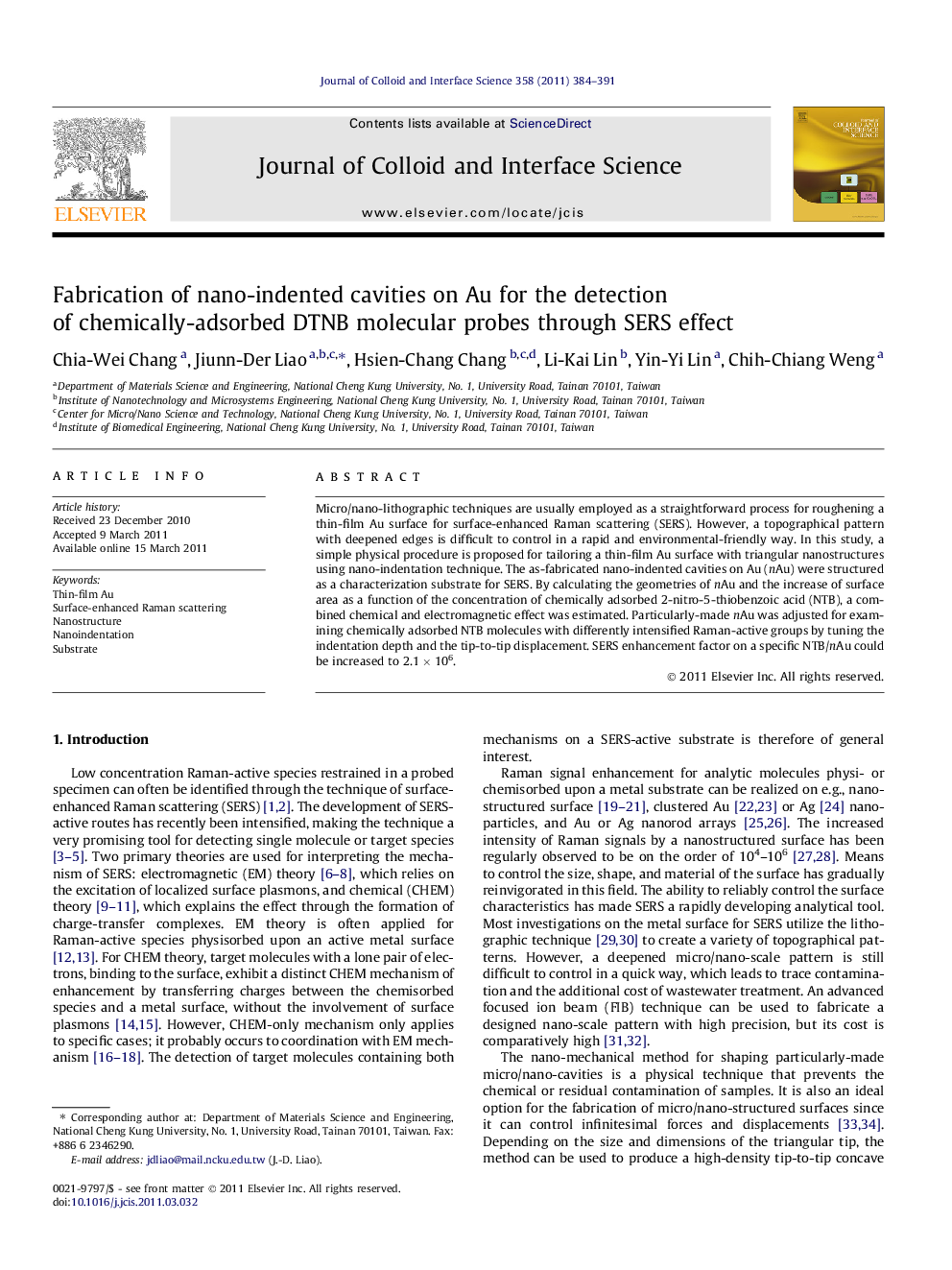| کد مقاله | کد نشریه | سال انتشار | مقاله انگلیسی | نسخه تمام متن |
|---|---|---|---|---|
| 608586 | 880604 | 2011 | 8 صفحه PDF | دانلود رایگان |

Micro/nano-lithographic techniques are usually employed as a straightforward process for roughening a thin-film Au surface for surface-enhanced Raman scattering (SERS). However, a topographical pattern with deepened edges is difficult to control in a rapid and environmental-friendly way. In this study, a simple physical procedure is proposed for tailoring a thin-film Au surface with triangular nanostructures using nano-indentation technique. The as-fabricated nano-indented cavities on Au (nAu) were structured as a characterization substrate for SERS. By calculating the geometries of nAu and the increase of surface area as a function of the concentration of chemically adsorbed 2-nitro-5-thiobenzoic acid (NTB), a combined chemical and electromagnetic effect was estimated. Particularly-made nAu was adjusted for examining chemically adsorbed NTB molecules with differently intensified Raman-active groups by tuning the indentation depth and the tip-to-tip displacement. SERS enhancement factor on a specific NTB/nAu could be increased to 2.1 × 106.
Nano-indented cavities on Au (nAu) were structured and arrayed as SERS-active substrate for the detection of chemically-adsorbed molecular probes. A combined chemical and nano-structure induced electromagnetic effect was significantly resulted.Figure optionsDownload high-quality image (91 K)Download as PowerPoint slideHighlights
► Nano-indentation technique to fabricate surface-enhanced Raman scattering (SERS)-active substrates is a novel and effective means.
► By calculating the geometries of nano-indented cavities on Au (nAu), the factors to enhance SERS effect can be estimated.
► The indentation depth of the nAu plays an important role to enhance electromagnetic (EM) effect of SERS.
► A combined chemical and nano-structure induced EM effect is competent to detect chemically absorbed species within the nAu.
► Particularly-made nAu is adjustable and sensitive enough for trace detection of Raman-active species.
Journal: Journal of Colloid and Interface Science - Volume 358, Issue 2, 15 June 2011, Pages 384–391